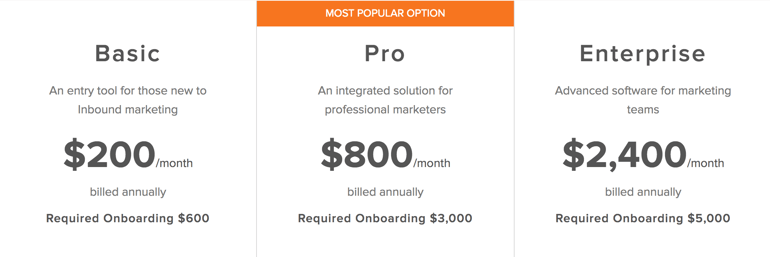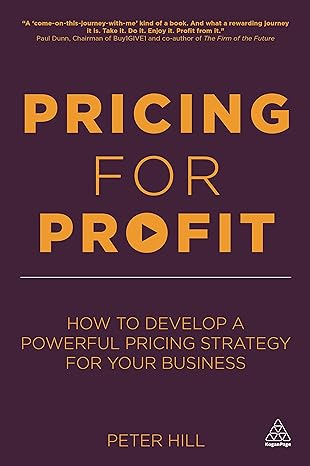Price Anchoring: A Key Component in Your Pricing Strategy
 PriceBeam
·
3 minute read
PriceBeam
·
3 minute read

You’re reading this article because you’re eager to learn more about price anchoring and how you can use it in your pricing strategy -- but before we do, let’s first take a step back and briefly consider how your customer’s mind works. The objective of any for-profit firm is ultimately to generate -- you guessed it -- profit. To maximize profit, the firm needs to drive up the customer’s willingness to pay as much as possible, i.e. the firm needs to make the product appear as valuable as possible. When determining value, customers will compare the product to other goods, both ones that are not related to the product whatsoever (i.e. the general price level), and goods in the same category. The price points used for comparison provide a frame of reference -- it makes sense when we consider the way any economic decision is made: by comparing the next best alternative.
Your product’s value as a whole is actually kind of irrelevant when it comes to price setting. What truly matters is the incremental value -- the additional value that the customer gets from purchasing your product rather than the next best alternative.
Over the past few years, PepsiCo has dealt with such considerations all the time. To address the greater demand for healthy snacks, the consumer goods firm decided to invest heavily in R&D, and reduce sodium- and fat contents in their snacks to stand out from the competition. And they did stand out. Now, PepsiCo of course wanted to recoup its R&D expenses, and there was no doubt that some price increase could be justified. But how much?
To answer this question, PepsiCo must consider how much extra customers will pay for the new version with X% less sodium compared to the old version. Let’s assume that the old version cost $2.00: if the incremental value (i.e. the reduced sodium-level) is worth $0.50 to the customer, then the price of the new version should be $2.50. The new price is set with the frame of reference in mind: the alternatives decide how much the new version is worth to the customer.
The conclusion is this: the new product price equals the old product price + additional value.
Additional value is all down to product development -- this is, of course, of the essence. But at the same time, you can change the point of reference if that point is your own product. This is what price anchoring is all about. Price anchoring is strategically managing the frames of reference that customers use for valuing your product by creating and adjusting price anchors.
Adjusting Price Anchors
A low-hanging fruit is to adjust existing price anchors, given that it’s within your power (which, surprisingly often, it is). Most SaaS companies, for instance, will be selling several packages, all of which are interdependent in that they act as price anchors -- that is, the price of the individual package will influence the perceived value of another package. Most SaaS firms will have a ‘preferred package’, and hence, the prices of other packages should be set to optimize sales of this preferred package.
Let’s look at the SaaS firm HubSpot.

Obviously, HubSpot wants to sell their Pro-version, but, of course, they still have their Basic-version for those really price-sensitive startups, and an Enterprise-version for big companies where $2,400 is no big deal. Implicitly, with this pricing, HubSpot is claiming that the Pro-version is worth an additional $600 per month compared to the Basic version -- so if the additional value is kept constant (i.e. no new features are introduced to the pro-version), HubSpot needs to increase the 'Basic' price to increase willingness to pay for the Pro-version. Moreover, by setting such a high Enterprise-version price, HubSpot makes the Pro-version seem like a bargain. You get almost the same functionality, at a third of the price. So it works both ways -- which is probably why HubSpot increased the price of the Enterprise-version from $1,000 to $2,400.

Creating Price Anchors
Sometimes you don't have any price anchors that you can adjust; or maybe you just need more to create the perfect context for the price. In that case, you may find it useful to create one yourself. With price anchoring, we often talk about 'useless price points': that is, prices that you don't really expect anyone to pay because there is a great imbalance between price and value. For instance, as HubSpot, you can create an Enterprise-version to make your preferred product seem like a bargain: my guess would be that HubSpot doesn't sell many Enterprise-versions, especially when we consider that they raised the price by $1,400 for a couple of basic reporting features. In that sense, HubSpot's Enterprise-version is a 'useless price point'.
Moreover, if HubSpot experience that they actually target two completely different segments with the Basic- and Pro-versions, i.e. one segment that would never dream of buying a Pro-version, and another that find the 'Pro' price very cheap already, then they may need to introduce a new price anchor. For example, they could introduce an 'Intermediate version at $650 (Pro-version costs $800), with much fewer features than the Pro-version. Customers will look at all the additional features they get for merely $150 and be compelled to purchase the Pro-version.
Final Note: Continuously Test Your Anchors
The real world is not as simple as economics suggest, and you should continuously test and revise your price anchors to make sure your price anchoring has the intended effect on your pricing strategy. HubSpot didn't get it right the first time either -- and especially with useless price points, there is no shame in making a massive change to adjust the price anchors.
.png?width=400&height=100&name=PBLogoTransparent%20(1).png)




